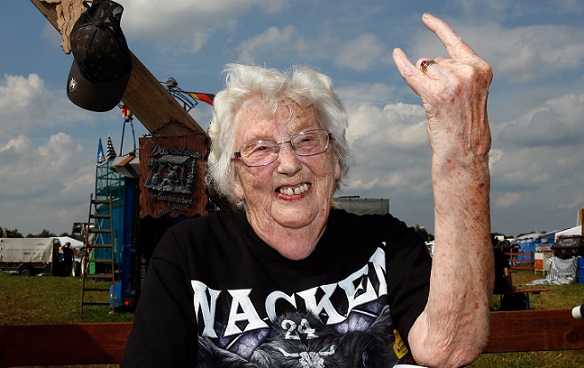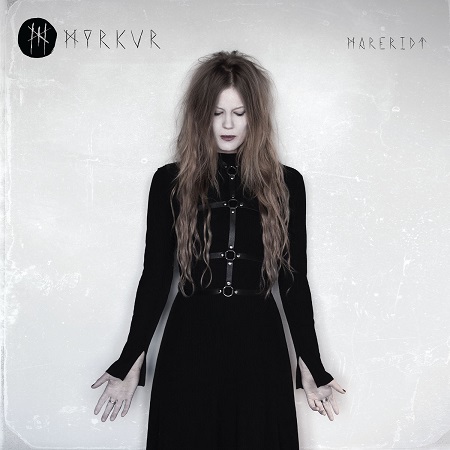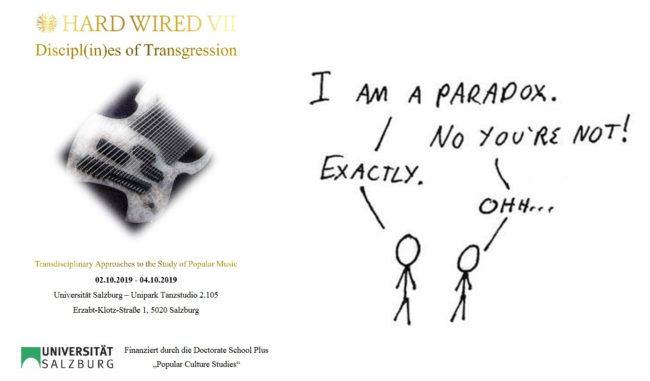Usually, Metal is referred to as a discourse of popular culture for and/or of young people, called a ‘youth culture’ and/or ‘subculture’.1 Historically, looking at the origins of Metal in the late 1960s and 1970s, then its spread and diversification in the 1980s, this seemed to be the case. Heavy Metal was established, following the discourse of ‘1968’, as a counter-culture.
Metal is supposed to have been ‘invented’, performed and mediated by young, angry and critical people. Most of all, white, young and male artists were seen as the stereotypical carriers of its aesthetics, imaginaries and narratives. However, even in these early days, starting with the global success of artists like Black Sabbath, economic success would not have been possible if it had not been backed by organizational structures of the music industry, leisure industry and media – and these institutions of (Western) societies were governed by experienced, often older stakeholders.2
Thus, coining Metal a youth culture or subculture, even in its early cultural history, is an abridging hypothesis. Rather, this narrative of youthfulness and a critique of society should be seen as a construction of discourse – constructed by artists, fans, industry stakeholders, media and other instances. However, until around 2000, this narrative seemed to prevail. Grunge and Alternative Rock as new forms contested Heavy Metal discourse but still it was seen as a realm of young fans and artists.3
Let us take a look at the state of this (self-)narrative in 2017. First of all, the artists who ‘invented’ and popularized Metal in the 1970s and 1980s cannot seriously be called young anymore: the members of Black Sabbath are approaching the eighth decade of their lives; the musicians in Iron Maiden are in their fifties or sixties; so are the members of Judas Priest (with the exception of guitarist Richie Faulker who is not a founding member); also Lars Ulrich and James Hetfield, the creative duo of Metallica, left behind their fiftieth birthdays. We can expect their fans, at least a part of them, to be of a similar age.
The other aspect – interpreting Metal as a critique of society in the shape of a musical subculture – is even more important. In several of my earlier postings, one of my main findings was that since about 2014 Heavy Metal is increasingly accepted as a ‘serious’ form of art. It is seen ‘worth’ being a subject of academic research. Among other processes, this is the context of the emergence of Metal Music Studies as an own discourse in academia. Also, today Metal is seen as integrally linked to a very fragmented and diverse mainstream.
From the point of view of cultural history, these three cultural processes – (1) the (self-)narration of Metal as a ‘youthful’ and ‘critical’ culture, (2) the acceptance of Metal in science and the emergence of Metal Music Studies, and (3) the spread of Heavy Metal music’s imaginary and aesthetics into mainstream – form an interdependent network: the narrative needs acceptance as a ‘serious’ subject of research; research needs the spread into mainstream to ‘prove’ Metal’s global relevance as a subject of scientific inquiry.
From my point of view, this threefold network results in one major cultural-historical consequence: the discourse in its entirety of narrations, imaginaries, aesthetics and sounds, is at a crossroads, where its initial cultural textures – the image of ‘a youth culture’ and ‘subculture’ – is being recoded in this parellelogram of cultural forces.
Cf. Deena Weinstein, Heavy Metal. The Music and its Culture. Boulder, Colorado, 2000; Rolf F. Nohr, Rolf/Herbert Schwaab, Herbert (eds.), Metal Matters. Heavy Metal als Kultur und Welt. Berlin e.a. 2011; Jeremy Wallach e.a (eds.), Metal Rules the Globe. Heavy Metal Music Around the World. Durham 2011. ↩
For an integral approach, cf. Deena Weinstein, Rock’n America. A Social and Cultura History. Toronto 2015. ↩
Cf. ibid. ↩




